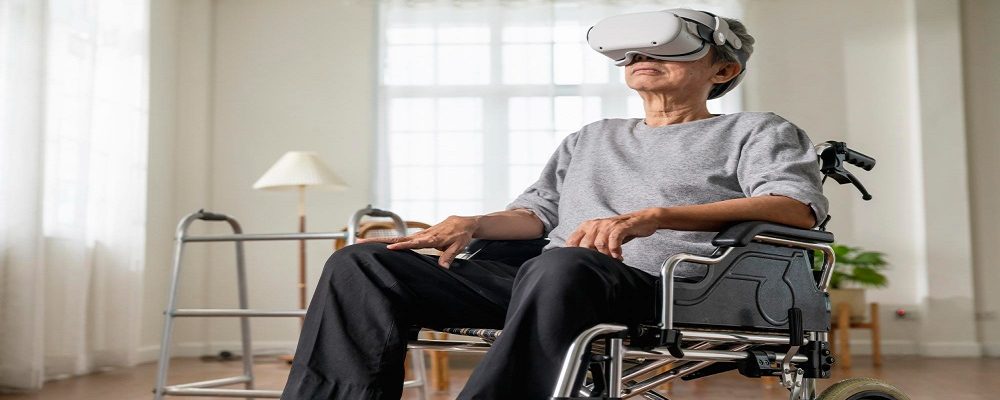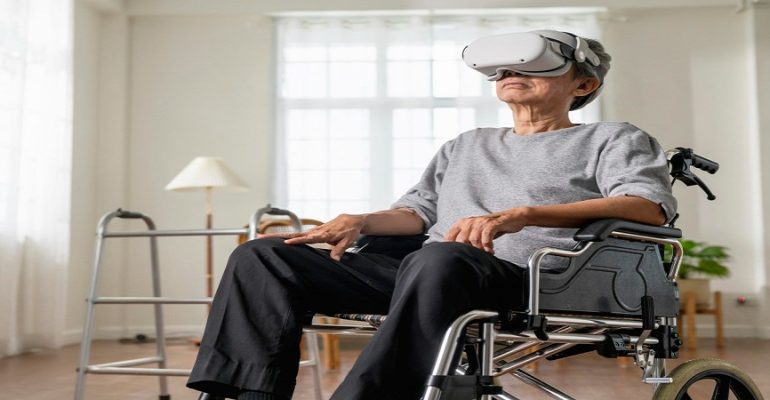
Top 8 Use cases of Extended Reality (XR) in Patient Therapy

Top 8 Use cases of Extended Reality (XR) in Patient Therapy
Web 3.0 and cutting-edge technologies are creating promising and transformative impacts on patient therapy. Extended Reality (XR) is emerging as a groundbreaking technology that is revolutionizing the way healthcare professionals approach treatment and rehabilitation. XR is offering innovative tools for healthcare providers to enhance treatment outcomes.
The VR healthcare market is growing at a rocket speed. In 2020 the worldwide XR healthcare market generated more than $ 2 billion in sales and by the end of 2030, it is expected to expand at a CAGR of 35% to about $ 4 billion.
What is Extended Reality (XR)?
XR refers to a variety of immersive technologies that blend the physical and digital worlds. It includes three main subcategories that include Virtual Reality (VR), Augmented Reality(AR), and Mixed Reality(MR). By fusing real and virtual environments, XR aims to give people experiences that are more immersive, interactive, and compelling.
According to the survey, the size of the global extended reality market for healthcare was US$ 4.5 billion in 2022. The market is anticipated to grow at a compound annual growth rate (CAGR) of 28.64% from 2023 to 2028.
Use Cases of Extended Reality in Patient Therapy
1. Pain Distraction and Management
XR can immerse patients in engaging virtual environments, to distract them from pain during medical operations and chronic pains. This diversion strategy may lessen anxiety and pain perception, which may result in less need for painkillers.
2. Physical Rehabilitation and Motor Skills Training
For patients undergoing physical therapy, XR applications offer interactive drills and simulations. The rehabilitation process is made more entertaining and efficient by the ability of users to follow personalized regimens, receive real-time feedback, and monitor progress.
3. Social Skills Training
Individuals with autism spectrum disorder or social anxiety can practice social interactions in virtual scenarios. XR provides a safe space to rehearse conversations and situations, leading to increased comfort and improved social skills in real life.
4. Exposure Therapy
It is available in safe and controlled environments with XR. Patients with phobias, PTSD, or anxiety disorders can gradually confront their fear through virtual scenarios, assisting them in managing triggers.
5. Cognitive Therapy and Brain Injury Healing
Exercises to enhance memory, attention, and problem-solving abilities are available through XR for patients recovering from traumatic brain injuries or cognitive disabilities. These interactive exercises help quicken cognitive recovery and make therapy sessions interesting.
6. Stress and Anxiety Reduction
Patients have access to virtual environments created for stress relief and relaxation through XR. These interactive experiences can lead users through relaxation routines like deep breathing and meditation.
7. Chronic Illness Coping and Empowerment
Through XR experiences, people with chronic illnesses might find solace in virtual worlds. These environments support emotional health and give patients a feeling of empowerment and relief from the challenges of their conditions.
8. Telehealth and Remote Therapy
With XR, therapists can conduct remote sessions with patients who cannot be physically present. This technology allows for interactive sessions, simulations, and exercises that simulates in-person therapy, making therapy more accessible and convenient.
Some of Real-time examples of XR in Patient therapy
1. VR Pain Management
Cedars-Sinai Medical Center in Los Angeles is using VR for pain management procedures like physical therapy, wound care, and labour. VR distraction therapy offers patients with immersive experiences that help them to lower patients’ perception of pain, anxiety, and discomfort during medical procedures.
2. Stroke Rehabilitation
MindMotionPRO is an XR-based rehabilitation platform that is utilized to aid with stroke recovery. It targets motor skills and cognitive functions with interesting workouts that blend robotics and virtual reality. Patients with mobility impairments can engage in interactive tasks that help retrain their brains and regain motor control.
3. Phobia Treatment
Virtually Better a company that specializes in XR applications for mental health provides exposure therapy for phobias. By exposing patients to scenarios associated with their anxieties, a secure and controlled environment is created for them to confront and manage their phobias.
4. Autism Spectrum Disorder Therapy
Floreo uses XR to help patients with autism spectrum disorder (ASD) improve their social and communication skills. The platform offers interactive scenarios to practice various social situations, helping patients build confidence and skills in a controlled environment.
Final Thoughts
The integration of XR inpatient therapy has brought a new age of creativity and efficacy in healthcare. From pain management to cognitive rehabilitation, XR has proven its versatility and potential to enhance the well-being of patients across various medical conditions.
XR provides healthcare professionals the personalized and engaging therapy experiences. These experiences not only increase patients’ engagement but also quicken the healing process, lessen anxiety, and enhance the overall quality of treatment.
The effective application of XR in the treatment of ailments like PTSD, chronic pain, cognitive decline, and phobias highlights how well it can be used to address a wide range of therapeutic needs. For both patients and healthcare providers, XR is a ray of hope, offering better results, more well-being, and a more positive future.
Sapizon Technologies is an XR solution development company, delivering engaging XR solutions for the healthcare industry.
